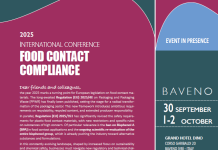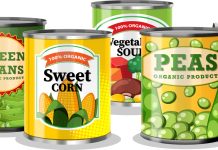 Effects of ultrasound on the quality of sponge cake.
Effects of ultrasound on the quality of sponge cake.
Sponge cake dough is a complex dispersed system, consisting of about 45% of air bubbles, Separated from each other by films of the liquid dispersed medium, consisting mainly of eggs, sugar and flour. Since it is known that ultrasonic vibrations are capable of altering the aggregate state of food, in a recent study conducted by a group of Ukrainian researchers (Myroshnyk et al., 2020) analysed the effects of ultrasonic (US) treatment on the quality of sponge cake.
The results indicate that the use of US reduces the foaming duration of the egg-sugar mixture, for an easier whipping of all the components, which significantly reduces the labor intensity of the sponge cake production process. In particular, this effect is maximally achieved by whipping the samples at an ultrasonic power of 0.6 kW and at a temperature of 26°C for 6.5 minutes.
It was also observed that the US treated product has significantly higher porosity and specific volume values, as well as significantly more homogeneous pores distribution than in the reference sample. The authors attribute these results to acoustic cavitation occurring in a medium at ultrasonic propagation.
In conclusion, the proposed treatment not only facilitates the production process of sponge cake, with significant economic benefits, but also allows the production of products with improved structural qualities. However, further research is still needed to determine the impact of US on other quality parameters as for example, the rheological properties of the dough.
Use of cold-set gelation in the production of jelly candies
The use of new technologies that can make food processes more sustainable is crucial for the food industry. In this context, a recent study carried out by a group of Brazilian researchers (Mariz de Avelar et al., 2020), evaluated the sustainability aspects of cold-set gelation technique in the jelly candy manufacturing process and its impacts on the quality of the obtained products.
The results indicate that the use of this technology allows to achieve significant reductions in both energy consumption and gas emissions (i.e., carbon dioxide) in comparison with the conventional process. Furthermore, it was observed that cold-set jellies show about 3.3 times more phenolic compounds and 1.22 times more acid ascorbic content than conventional jellies.
The sensory acceptance test showed no significant differences between the two types of product. Finally, the results of a questionnaire on purchasing behaviour indicate that consumers are very interested and willing to pay more for products with sustainability labels. In conclusion, the authors argue that cold-set gelation not only allows to increase the sustainability of the production process of jelly candies, but also improves their nutritional quality.
References: Myroshnyk et al., Eastern-European Journal of Enterprise Technologies, 1, 2020, 43-49; M.H. Mariz de Avelar et al., Cleaner Engineering and Technology, 1, 2020, 100005.



